APC 2012 Annual Report Download - page 16
Download and view the complete annual report
Please find page 16 of the 2012 APC annual report below. You can navigate through the pages in the report by either clicking on the pages listed below, or by using the keyword search tool below to find specific information within the annual report.-
 1
1 -
 2
2 -
 3
3 -
 4
4 -
 5
5 -
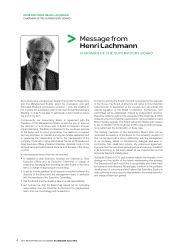 6
6 -
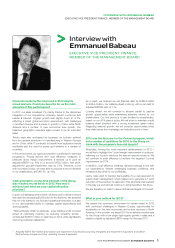 7
7 -
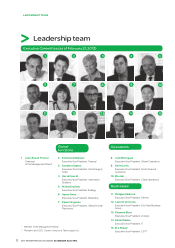 8
8 -
 9
9 -
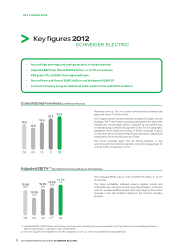 10
10 -
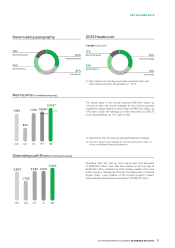 11
11 -
 12
12 -
 13
13 -
 14
14 -
 15
15 -
 16
16 -
 17
17 -
 18
18 -
 19
19 -
 20
20 -
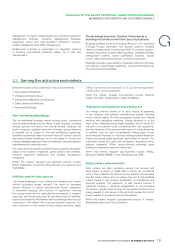 21
21 -
 22
22 -
 23
23 -
 24
24 -
 25
25 -
 26
26 -
 27
27 -
 28
28 -
 29
29 -
 30
30 -
 31
31 -
 32
32 -
 33
33 -
 34
34 -
 35
35 -
 36
36 -
 37
37 -
 38
38 -
 39
39 -
 40
40 -
 41
41 -
 42
42 -
 43
43 -
 44
44 -
 45
45 -
 46
46 -
 47
47 -
 48
48 -
 49
49 -
 50
50 -
 51
51 -
 52
52 -
 53
53 -
 54
54 -
 55
55 -
 56
56 -
 57
57 -
 58
58 -
 59
59 -
 60
60 -
 61
61 -
 62
62 -
 63
63 -
 64
64 -
 65
65 -
 66
66 -
 67
67 -
 68
68 -
 69
69 -
 70
70 -
 71
71 -
 72
72 -
 73
73 -
 74
74 -
 75
75 -
 76
76 -
 77
77 -
 78
78 -
 79
79 -
 80
80 -
 81
81 -
 82
82 -
 83
83 -
 84
84 -
 85
85 -
 86
86 -
 87
87 -
 88
88 -
 89
89 -
 90
90 -
 91
91 -
 92
92 -
 93
93 -
 94
94 -
 95
95 -
 96
96 -
 97
97 -
 98
98 -
 99
99 -
 100
100 -
 101
101 -
 102
102 -
 103
103 -
 104
104 -
 105
105 -
 106
106 -
 107
107 -
 108
108 -
 109
109 -
 110
110 -
 111
111 -
 112
112 -
 113
113 -
 114
114 -
 115
115 -
 116
116 -
 117
117 -
 118
118 -
 119
119 -
 120
120 -
 121
121 -
 122
122 -
 123
123 -
 124
124 -
 125
125 -
 126
126 -
 127
127 -
 128
128 -
 129
129 -
 130
130 -
 131
131 -
 132
132 -
 133
133 -
 134
134 -
 135
135 -
 136
136 -
 137
137 -
 138
138 -
 139
139 -
 140
140 -
 141
141 -
 142
142 -
 143
143 -
 144
144 -
 145
145 -
 146
146 -
 147
147 -
 148
148 -
 149
149 -
 150
150 -
 151
151 -
 152
152 -
 153
153 -
 154
154 -
 155
155 -
 156
156 -
 157
157 -
 158
158 -
 159
159 -
 160
160 -
 161
161 -
 162
162 -
 163
163 -
 164
164 -
 165
165 -
 166
166 -
 167
167 -
 168
168 -
 169
169 -
 170
170 -
 171
171 -
 172
172 -
 173
173 -
 174
174 -
 175
175 -
 176
176 -
 177
177 -
 178
178 -
 179
179 -
 180
180 -
 181
181 -
 182
182 -
 183
183 -
 184
184 -
 185
185 -
 186
186 -
 187
187 -
 188
188 -
 189
189 -
 190
190 -
 191
191 -
 192
192 -
 193
193 -
 194
194 -
 195
195 -
 196
196 -
 197
197 -
 198
198 -
 199
199 -
 200
200 -
 201
201 -
 202
202 -
 203
203 -
 204
204 -
 205
205 -
 206
206 -
 207
207 -
 208
208 -
 209
209 -
 210
210 -
 211
211 -
 212
212 -
 213
213 -
 214
214 -
 215
215 -
 216
216 -
 217
217 -
 218
218 -
 219
219 -
 220
220 -
 221
221 -
 222
222 -
 223
223 -
 224
224 -
 225
225 -
 226
226 -
 227
227 -
 228
228 -
 229
229 -
 230
230 -
 231
231 -
 232
232 -
 233
233 -
 234
234 -
 235
235 -
 236
236 -
 237
237 -
 238
238 -
 239
239 -
 240
240 -
 241
241 -
 242
242 -
 243
243 -
 244
244 -
 245
245 -
 246
246 -
 247
247 -
 248
248 -
 249
249 -
 250
250 -
 251
251 -
 252
252 -
 253
253 -
 254
254 -
 255
255 -
 256
256 -
 257
257 -
 258
258 -
 259
259 -
 260
260 -
 261
261 -
 262
262 -
 263
263 -
 264
264 -
 265
265 -
 266
266 -
 267
267 -
 268
268 -
 269
269 -
 270
270 -
 271
271 -
 272
272 -
 273
273 -
 274
274 -
 275
275 -
 276
276 -
 277
277 -
 278
278 -
 279
279 -
 280
280 -
 281
281 -
 282
282 -
 283
283 -
 284
284 -
 285
285 -
 286
286 -
 287
287 -
 288
288 -
 289
289 -
 290
290 -
 291
291 -
 292
292 -
 293
293 -
 294
294 -
 295
295 -
 296
296 -
 297
297 -
 298
298 -
 299
299 -
 300
300 -
 301
301 -
 302
302 -
 303
303 -
 304
304 -
 305
305 -
 306
306 -
 307
307 -
 308
308 -
 309
309 -
 310
310 -
 311
311 -
 312
312 -
 313
313 -
 314
314 -
 315
315 -
 316
316 -
 317
317 -
 318
318 -
 319
319 -
 320
320
 |
 |

2012 REGISTRATION DOCUMENT SCHNEIDER ELECTRIC14
OVERVIEW OF THEGROUP’S STRATEGY, MARKETS AND BUSINESSES
1OUR STRATEGY AND MARKET OPPORTUNITIES
>
1. Our strategy and market
opportunities
Schneider Electric, the global specialist in energy management with operations in over 100countries, leverages its
portfolio to make energy safe, reliable, effi cient, productive and green.
While global energy demand is set to rise to support growing industrialization and urbanization and energy prices are
escalating, carbon emissions must be cut drastically to protect the planet from irreversible climate change. Energy
effi ciency has been identifi ed as an essential part of the solution to the energy challenge and is a key pillar of Schneider
Electric’s strategy.
1.1 Our mission
Schneider Electric manages energy in the space between
producers and consumers. Its mission is to leverage its portfolio to
make energy:
•safe: protecting people and assets;
•reliable: guaranteeing ultra-secure, ultra-pure and uninterrupted
power especially for critical applications;
•efficient: delivering energy effi cient solutions adapted to the
specifi c needs of each market;
•productive: expanding the use of automation and connectivity,
providing services throughout an installation’s life cycle;
and
•green: offering solutions that are environmentally friendly.
1.2 We see favourable trends in our environment creating opportunities
Energy efficiency
Energy Effi ciency, meaning doing more with less, is an essential part
of the solution to the global energy challenge.
In its latest World Energy Outlook, the International Energy Agency
(IEA) estimates that the various energy effi ciency policies that
are being introduced in many countries across the world could
account for about 70% of the reduction in projected global energy
demand in2035, and 68% of the cumulative global savings in CO2
emissions. This compares with a 46% increase in global energy
demand by2035 if nothing changes.
Boosting Energy Effi ciency on the 3 major energy-consuming
sectors (Industry, Buildings and Homes) could help a country
reduce its overall energy use by 15% to 25% –in effect providing
a very attractive business case in both mature and new economies.
Energy Effi ciency also offers an excellent payback: according to
the IEA, every Euro invested, in particular in Buildings, would yield
EUR1.6 in energy savings.
Alongside traditional “passive” energy effi ciency technologies such
as building insulation and energy-effi cient equipments, “active”
energy effi ciency has a big role to play. Active energy effi ciency
means optimizing a commercial & industrial building’s performance
and usage through the use of building automation. One simple
example is to automatically adjust lighting and heating to room
occupancy – adapting to external conditions while ensuring users’
comfort.
This helps to continuously optimize energy performance throughout
the building’s lifecycle - providing overall effi ciency . Active energy
effi ciency can save up to 30% of a building’s energy needs,
signifi cantly improving a company’s carbon footprint while
deliveringsavings on its charge s , with limited upfront investment.
Building automation is also a key enabler of the Smart Grid,
facilitating Demand side management by connecting buildings
smartly to the grid.
Towards a smarter electricity grid
Today’s electricity grid is very similar to what it was one century
ago, carrying electricity from centralized generation plants to users
in homes, buildings, and facilities. But the grid is now undergoing
a revolution. Energy demand keeps increasing; carbon emissions
need to come down, and electricity is a big carbon emitter; there
are more and more renewable energy sources, which are by nature
intermittent and by design distributed; and infrastructures are
ageing, overloaded, or in need of heavy maintenance. The network
must therefore become smarter to adapt to this changing and more
complex environment.
